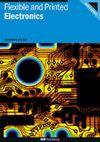用于移动列车驱动的风速测量的灵活自供电三电纳米发电机传感器
IF 3.2
4区 工程技术
Q3 MATERIALS SCIENCE, MULTIDISCIPLINARY
引用次数: 0
摘要
灵活的自供电传感器已广泛应用于物联网、结构健康监测(SHM)和智能交通领域。在轨道交通系统的长期维护过程中,对这些传感器的供电要求更高。高速列车产生的风压/风速对人身安全构成重大威胁,因此应开发无需外部电源的新型传感器来监测轨道旁的风压/风速。基于导电水凝胶的单电极模式柔性自供电风力三电纳米发电机(W-TENG)传感器就是通过收集风能来实现无电源风压/风速监测的。研究了传感器输出电压与高速列车驱动的风压/风速之间的关系。采用材料选择和结构设计方法来提高自供电 W-TENG 传感器的能量收集效率和传感精度。实现了 2.8 μA 的开路电流和 12 V 的开路电压,输出电压信号与轨旁风压/风速呈线性关系。通过现场测试,评估了自供电 W-TENG 传感器在列车运行引起的风压/风速测量中的性能,为 SHM 在智能传输系统中的应用提供了思路。本文章由计算机程序翻译,如有差异,请以英文原文为准。
Flexible self-powered triboelectric nanogenerator sensor for wind speed measurement driven by moving trains
Flexible self-powered sensors have been extensively applied to the Internet of Things, structural health monitoring (SHM), and intelligent transportation. It would be more demanding for the power supply to these sensors during the long-term maintenance of the rail transit system. The wind pressure/velocity generated by high-speed trains poses a substantial threat to safety of human, and new sensors without an external power supply should be developed to monitor wind pressure/velocity in the trackside. Flexible self-powered wind triboelectric nanogenerator (W-TENG) sensor with a single-electrode mode based on conductive hydrogel is designed to wind pressure/velocity monitoring without power supply by harvesting wind energy. It is devoted the relationship between the output voltage of the sensors and the wind pressure/velocity driven by high-speed trains. Material selection and structural design methods are adopted to enhance the energy harvesting efficiency and sensing accuracy of self-powered W-TENG sensors. Open-circuit current of 2.8 μA and open-circuit voltage of 12 V are achieved, and the output voltage signal has the linear relationship with trackside wind pressure/velocity. Field tests are implemented to evaluate the performance of self-powered W-TENG sensors in wind pressure/velocity measurement caused by moving trains, providing an idea to SHM application in intelligent transmit systems.
求助全文
通过发布文献求助,成功后即可免费获取论文全文。
去求助
来源期刊

Flexible and Printed Electronics
MATERIALS SCIENCE, MULTIDISCIPLINARY-
CiteScore
4.80
自引率
9.70%
发文量
101
期刊介绍:
Flexible and Printed Electronics is a multidisciplinary journal publishing cutting edge research articles on electronics that can be either flexible, plastic, stretchable, conformable or printed. Research related to electronic materials, manufacturing techniques, components or systems which meets any one (or more) of the above criteria is suitable for publication in the journal. Subjects included in the journal range from flexible materials and printing techniques, design or modelling of electrical systems and components, advanced fabrication methods and bioelectronics, to the properties of devices and end user applications.
 求助内容:
求助内容: 应助结果提醒方式:
应助结果提醒方式:


